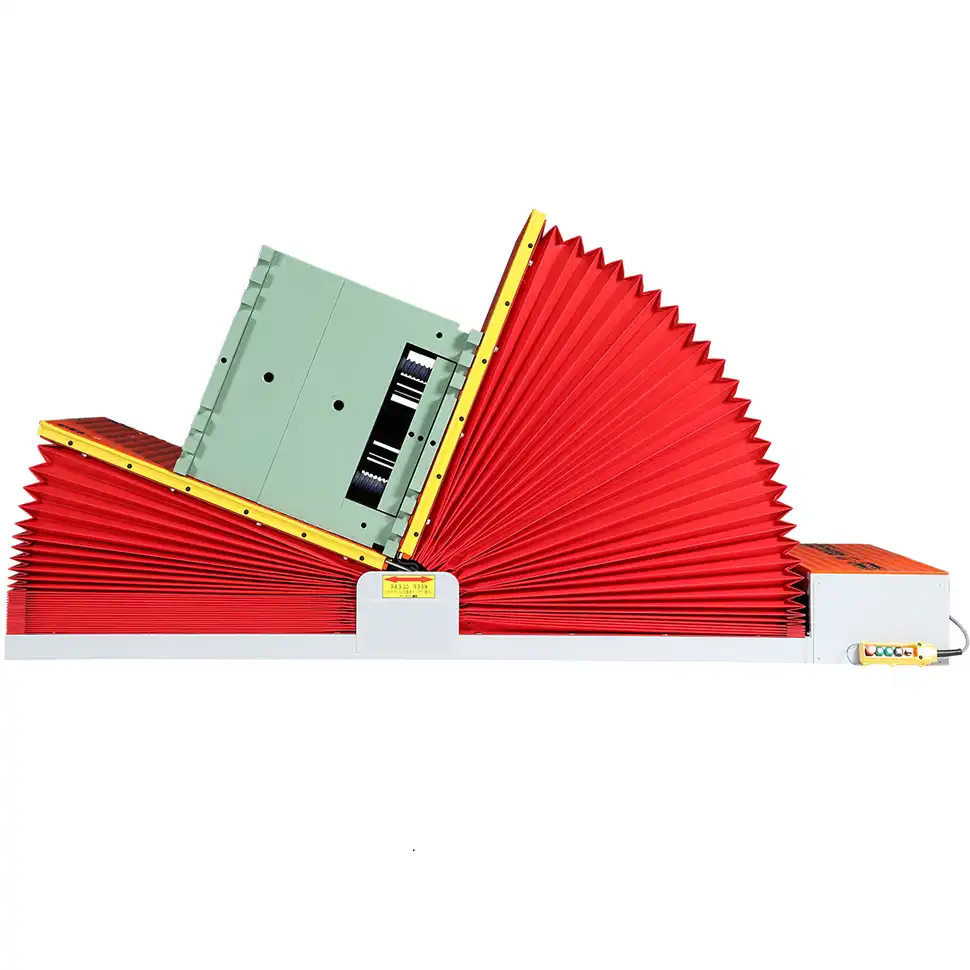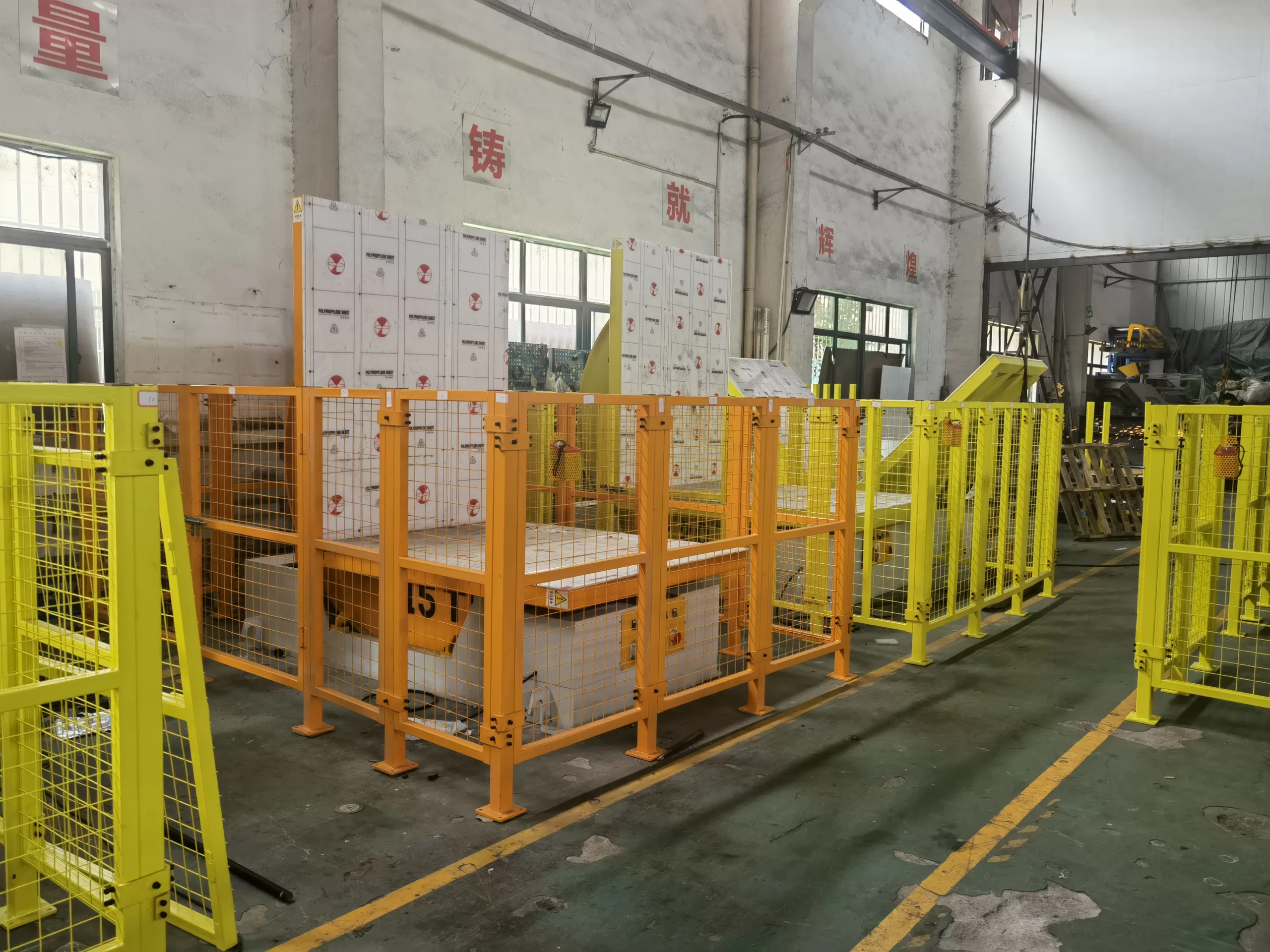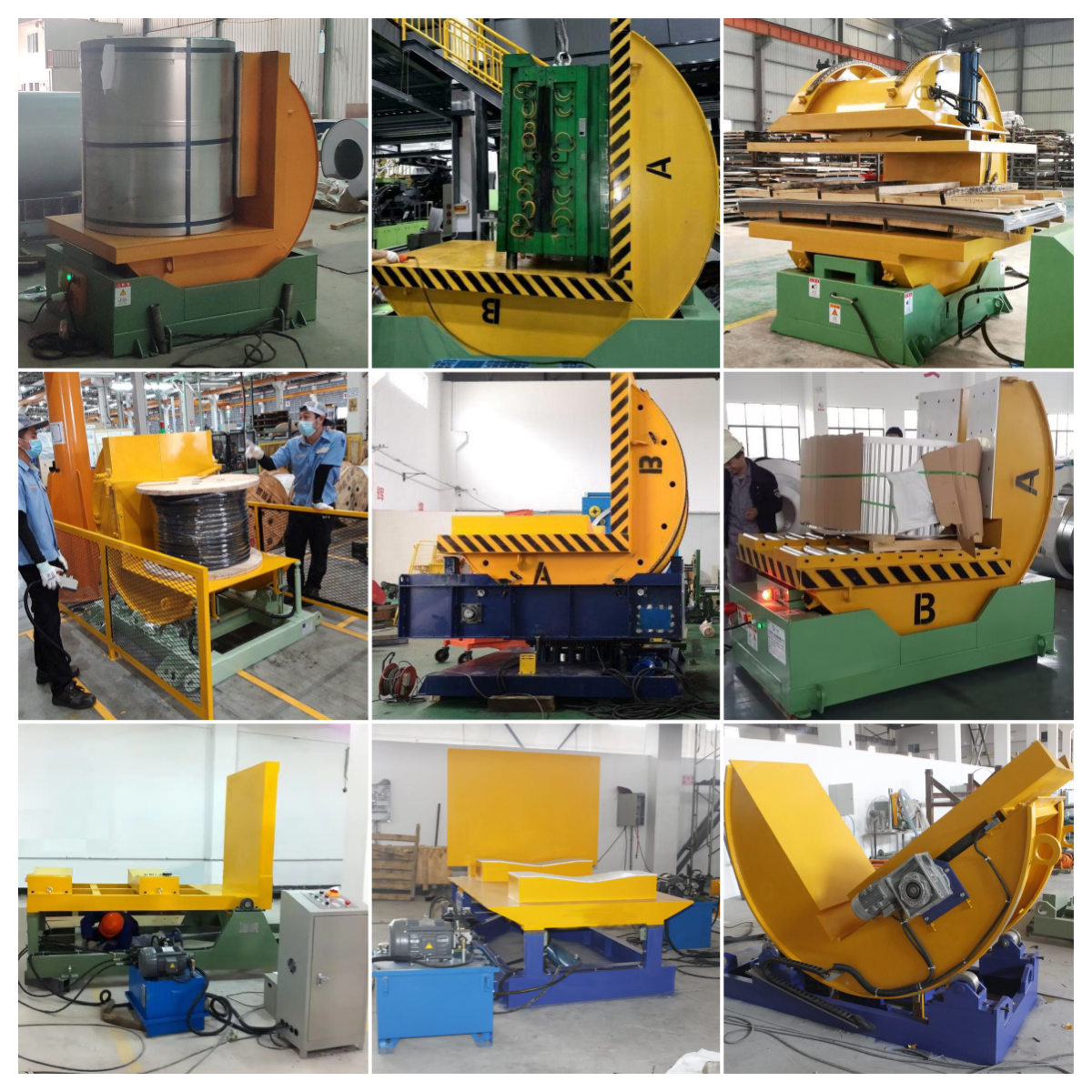Is Your Current Mold Flipping Setup Causing Downtime in Canadian Workshops?
Are you watching your production schedule slip day by day? You see your team struggling with oversized, heavy molds, using old cranes and chains in a slow, nerve-wracking process. Every time a mold needs to be flipped for maintenance or a production change, your entire line grinds to a halt. You know this process is inefficient and dangerous, a hidden cost that eats into your profits and puts your workers at risk. This isn't just a minor inconvenience; it's a critical bottleneck that's holding your entire operation back, a problem I've seen in countless workshops across Canada. But there is a straightforward solution that turns this liability into a streamlined, safe, and profitable part of your workflow.
Yes, an outdated or makeshift mold flipping setup is a significant and often underestimated cause of downtime in Canadian workshops. These traditional methods are inherently slow, unpredictable, and carry a high risk of accidents that can damage expensive molds or, far worse, injure personnel. This inefficiency directly translates into lost production hours and increased operational costs, making it a critical area for improvement.

I've spent my career on factory floors, first as an engineer and now as a factory owner. I’ve seen firsthand how small, overlooked processes can create the biggest headaches. Mold flipping is a classic example. It seems like a simple task, but the hidden costs of doing it the old way can be staggering. In the following sections, I want to break down exactly how these old methods are hurting your business and what a modern solution looks like. Let's explore how you can turn this point of pain into a source of strength for your workshop.
Are Traditional Mold Flipping Methods Secretly Sabotaging Your Safety and Efficiency?
You see the overhead crane and chains as a tool you already own. It seems like the most cost-effective way to handle mold turning. But have you ever calculated the true cost? Think about the near-misses, the slow, careful dance your team has to perform, and the constant, low-level anxiety that one slip could lead to disaster. This isn't just about efficiency; it's about a high-stakes gamble you're taking with every single flip. The potential for a catastrophic failure, damaging a mold worth tens of thousands of dollars or causing a serious injury, is a hidden liability that silently undermines your entire operation's stability.
Traditional mold flipping methods, such as using overhead cranes with chains or slings, absolutely sabotage safety and efficiency. They introduce a high degree of human error, require multiple skilled operators, and create a slow, unpredictable changeover process. This not only increases the direct risk of accidents and equipment damage but also creates a major production bottleneck that directly impacts your bottom line.

Deconstructing the True Cost of "Free" Methods
When I was a young engineer, I worked in a plant that used this exact method. The manager always said, "The crane is already paid for." But what he didn't account for were the hidden costs that bled the company's budget. Let’s break these down.
First, there's the risk to the mold itself. A mold is a precision-engineered tool. When you lift it with chains, the pressure points are uneven. A sudden jolt or slip can easily dent, scratch, or even crack the mold surface. I once saw a $50,000 mold get ruined because a chain slipped. The cost of repair and the production downtime far exceeded the price of a proper flipping machine.
Second, the safety risk is immense. This is the most important factor. In Canada, workplace safety regulations are strict for a good reason. An accident involving a multi-ton mold is often catastrophic. The costs go beyond immediate medical care; they include potential lawsuits, increased insurance premiums, and investigations by workplace safety authorities. More than that, it damages team morale. No one wants to work in an environment where they feel unsafe. This can lead to higher employee turnover, especially among skilled tradespeople who have other options.
The Inefficiency Bottleneck
Beyond the risks, the process is just painfully slow. Think about the steps involved: clearing the area, bringing in the crane, carefully attaching chains, having multiple people spot and guide the load, the slow flip itself, and then unhooking everything. This can take anywhere from 30 minutes to over an hour for a large mold. If you have several mold changes a day, you are losing hours of valuable production time. This is a classic bottleneck. Your multi-million dollar production line sits idle, waiting for a task that should take minutes. A dedicated mold flipper can complete the same task in under five minutes with a single operator. The efficiency gain is not marginal; it's exponential.
| Metric | Traditional Crane & Chains | Mechanical Mold Flipper |
|---|---|---|
| Time per Flip | 30 - 60+ minutes | 3 - 5 minutes |
| Labor Required | 2 - 3 skilled operators | 1 operator |
| Safety Risk | High (dropping, slipping) | Very Low (controlled, stable) |
| Mold Damage Risk | High (uneven pressure, impact) | Very Low (flat, supportive surfaces) |
| Skill Dependency | High (certified crane operator) | Low (simple button operation) |
| Repeatability | Low (depends on operator skill) | High (consistent every time) |
Looking at this table, it becomes clear. The "free" method of using a crane is one of the most expensive things you can do in your workshop when you factor in time, risk, and labor.
How Can a Mechanical Mold Flipper Drastically Cut Your Labor Costs and Downtime?
You look at your payroll and see the high cost of skilled labor. You look at your production reports and see the hours lost to unplanned downtime and slow changeovers. These two factors are squeezing your profit margins. You might be paying three highly-skilled workers to spend an hour on a dangerous mold flipping task, while your primary production equipment sits idle. It feels like you're paying people to wait. A mechanical mold flipper directly attacks these two core problems, turning a major cost center into a source of efficiency.
A mechanical mold flipper dramatically cuts labor costs by transforming a multi-person task into a safe, efficient one-person job. It slashes downtime by reducing the mold turning process from an hour or more to just a few minutes, creating predictable, rapid changeovers that maximize the uptime of your core production machinery.

The Simple Math of Labor Savings
Let’s do some very simple math. This is the kind of analysis I do before making any equipment purchase for my own factory. Assume you have two skilled workers and a crane operator performing a mold flip.
- Number of workers: 3
- Average skilled labor rate in Canada (including benefits): Let's say a conservative $50/hour.
- Total labor cost per hour: 3 workers * $50/hour = $150/hour.
- Time per flip using a crane: 1 hour.
- Cost per flip: $150.
Now, let's say you perform just four mold flips per week.
- Weekly cost: 4 flips * $150 = $600.
- Annual cost: $600 * 50 weeks = $30,000.
This $30,000 is just the direct labor cost for the time spent on the flip itself. It doesn't even include the cost of the production line being down. With a mechanical mold flipper, one operator can perform the same task in 5 minutes. The labor cost for that flip drops to around $4. The annual labor cost becomes less than $1,000. The savings are immediate and substantial. You are not just saving money; you are reallocating your most valuable resource—your skilled workers—to tasks that actually add value, like production, quality control, or machine maintenance.
Shifting from Unplanned to Predictable
Downtime is a business killer, but not all downtime is equal. Unplanned downtime is the worst kind. An accident with a crane, a damaged mold, or a near-miss that requires a safety stand-down—these are unpredictable events that throw your entire schedule into chaos. You can't plan for them. You can only react, and reacting costs a fortune in expediting fees, overtime, and lost orders.
A mechanical mold flipper changes the game. It’s a reliable, engineered system. Its "downtime" is scheduled maintenance, something you plan for once a year. The flipping process itself becomes a standardized, repeatable, and predictable part of your workflow. You know a mold change will take 10 minutes, every single time. This predictability allows for much tighter production scheduling. For a plant manager or owner like Javier Morales, who aims for 95% equipment uptime, eliminating sources of unplanned downtime is a primary goal. A mold flipper is a low-cost, high-impact way to achieve that stability. It's one of the easiest wins you can get on the factory floor.
What Key Features Should You Look for in a Modern Mold Flipper to Ensure ROI?
You've decided that a mechanical mold flipper is the right move. But now you're looking at different suppliers, and many of the machines look similar. Making the wrong choice is a serious risk. You could end up with a machine that is underpowered for your needs, breaks down frequently, or lacks the safety features to protect your team and your molds. To ensure a strong Return on Investment (ROI), you need to look past the sticker price and analyze the core features that define a high-quality, reliable machine.
To ensure a strong ROI on a mold flipper, you must look for four key features: a robust mechanical structure with a high safety factor, a powerful and smooth hydraulic or electro-mechanical drive system, precise controls that prevent jarring movements, and a design that can be customized to your specific mold sizes and workshop layout.

The Non-Negotiables: Structure and Power
This is the foundation of the machine. As an engineer, this is the first thing I look at. The machine's body must be built from high-quality steel (like Q345, which is stronger than standard Q235) with clean welds and a solid base. Ask the manufacturer about the "safety factor." A 2:1 safety factor means the machine is designed to handle twice its rated load. For something that flips tons of steel over your employees' heads, a high safety factor is non-negotiable.
Next, look at the drive system. This is what provides the power and control. You'll typically see two types: hydraulic or electro-mechanical (using a gear motor).
- Hydraulic systems are very powerful and can handle extremely heavy loads. Look for high-quality seals and hoses to prevent leaks.
- Electro-mechanical systems are often cleaner, require less maintenance, and can be very precise. The key here is the quality of the motor and gearbox. A system with a Variable Frequency Drive (VFD) is a huge advantage. A VFD allows the motor to ramp up and slow down smoothly, eliminating the jarring starts and stops that can damage a mold. A simple on/off contactor system is cheaper but far less precise. This smooth operation is critical for protecting your investment in the mold.
Customization: The Difference Between a Tool and a Solution
A standard, off-the-shelf machine might not be the best fit for your specific needs. A strategic supplier will work with you to provide a solution, not just a product. This is where customization comes in. Think about your molds. What are their dimensions? Their weight? How will they be loaded onto the flipper—by forklift or overhead crane?
A good manufacturer should be able to adjust key parameters:
- Table Size: The platform the mold sits on should be large enough to fully support your largest mold.
- Capacity: The machine must be rated for your heaviest mold, plus a safety margin.
- Working Height: The height of the table can be adjusted to match your forklifts or other equipment for ergonomic loading and unloading.
- Controls: Do you need a simple push-button pendant, or a wireless remote for better visibility and safety?
This level of customization ensures the machine integrates perfectly into your existing workflow. It's the difference between forcing your team to adapt to a new machine and having a machine that works for your team.
| Feature | Basic (Low-Cost) Flipper | Strategic (High-ROI) Flipper |
|---|---|---|
| Control System | On/Off Contactor | Variable Frequency Drive (VFD) |
| Movement | Jarring Start/Stop | Smooth, controlled acceleration |
| Safety Factor | Low (e.g., 1.5:1) | High (e.g., 2.5:1 or more) |
| Customization | Standard sizes only | Fully customizable table/height |
| Support | Limited to parts | Full installation & training support |
| Long-Term Value | Lower initial price, higher risk | Higher initial price, lower total cost |
When you analyze these features, you realize that paying a bit more upfront for a well-built, customizable machine with precise controls will deliver a far greater ROI through increased safety, reliability, and operational efficiency.
Why is a Customized Mold Flipper a Strategic Investment for Canadian Industrial Operations?
You operate in a high-cost environment. Labor is expensive, regulations are strict, and competition is fierce. In this context, every piece of equipment you buy cannot be just an expense; it must be a strategic investment that gives you a competitive edge. You might see a mold flipper as a simple piece of utility equipment, but I encourage you to see it differently. For a Canadian workshop, it's a strategic tool for tackling your biggest challenges head-on.
A customized mold flipper is a strategic investment for Canadian operations because it directly addresses the country's high labor costs and stringent safety standards. By automating a dangerous task, it reduces reliance on expensive skilled labor, ensures compliance with regulations like CSA, and improves overall efficiency, making the business more resilient and competitive.

Meeting and Exceeding Canadian Safety Standards
In Canada, safety isn't just a good idea; it's the law. Provincial bodies and standards like those from the Canadian Standards Association (CSA) set a high bar for machine safety. Using makeshift methods like a crane and chain for mold flipping is a compliance nightmare waiting to happen. An inspector could shut you down in a heartbeat.
Investing in a purpose-built mold flipper from a reputable manufacturer is the easiest way to ensure compliance. A good supplier will understand these requirements. They will provide machines with proper guarding, emergency stops, and clear operational documentation. They can often provide certification or engineering reports that prove the machine meets or exceeds local standards. This isn't just about avoiding fines. It's about demonstrating a commitment to safety that is essential for operating in the Canadian industrial landscape. It shows your employees, your insurance provider, and your clients that you are a professional, responsible operator. This proactive approach to safety is a hallmark of a well-run business.
A Building Block for Future Automation
For a forward-thinking leader like Javier Morales, who is pushing for digitalization and a "smart factory," every investment must have a future purpose. A mold flipper is not an isolated piece of equipment. It is a foundational step towards a more automated production environment.
Once you have a reliable, automated way to handle molds, you can start thinking about the next steps. Could the process be integrated with an Automated Guided Vehicle (AGV) that brings the mold to the flipper? Could the flipper's operation be tied into your Manufacturing Execution System (MES), signaling when a mold is ready for the production line?
By solving the basic, physical problem of flipping the mold safely and efficiently, you create a stable platform upon which you can build more advanced automation. You are future-proofing your operation. In a competitive market, the companies that thrive are the ones that continuously improve. This investment is not just about solving today's problem of downtime; it's about preparing your workshop for the challenges and opportunities of tomorrow. It's a small step that enables much larger leaps in efficiency later on.
My Insights
When I first started my career as an engineer on the factory floor, I saw these challenges firsthand. I didn't have a budget to buy new machines. We had to make do with what we had. I was the guy who had to figure out how to flip a 10-ton mold with an old crane. I know the stress and the risk involved. When I finally started my own factory, I made a promise to myself. I would invest in the foundational things first. I would solve the "small" problems that create the biggest risks and inefficiencies. A proper mold flipper was one of my very first purchases.
Why? Because I learned a crucial lesson on my journey from employee to owner: you cannot build a great business on a weak foundation. Your entire production process, worth millions of dollars, can be held hostage by a single, unsafe, and inefficient task. Men like Javier Morales, who have worked their way up from the floor, understand this. They know that operational excellence starts with getting the basics right. Investing in a machine like a mold flipper isn't about the machine itself. It’s a strategic decision about safety, efficiency, and respect for your people. It sends a clear message that you are building a professional, world-class operation designed for long-term success. That is the real return on investment.
Conclusion
Upgrading your mold flipper is not an expense. It's a crucial investment in safety, efficiency, and future profitability. Let's work together to build a better, safer workshop.





